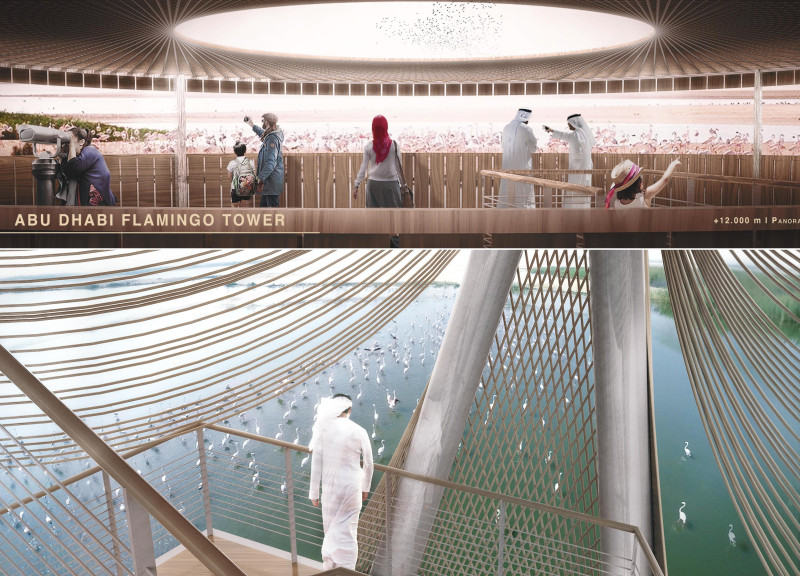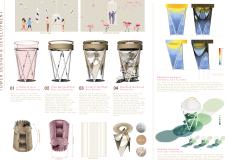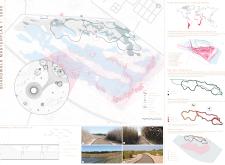5 key facts about this project
The Abu Dhabi Flamingo Tower is located in the distinctive ecological landscape of Abu Dhabi. Designed to function as an observation point, it also aims to honor the area’s cultural heritage. The design concept connects traditional elements with modern features, drawing inspiration from Qasr al-Hosn, an important historical building in the city. This connection provides visitors with a deeper understanding of the local context and enhances their experience of the natural environment.
Cultural Integration
The structure highlights the Sadu weaving pattern, a craft deeply rooted in Bedouin culture. This pattern is adapted and woven into the tower's design, creating an artistic feature that maintains a practical role. By incorporating historical elements, the tower reflects the community’s heritage, serving as a bridge between the old and the new.
Environmental Considerations
The design takes into account the local climate, focusing on effective shading and thermal performance. Through detailed analysis of sunlight and heat, designers strategically placed elements to provide optimal cover from the sun. This careful planning improves comfort for users while ensuring that the building blends well with its surroundings.
Functional Layout
The tower features a tiered deck system that includes a ground-level deck accessible to all, a mid-tower observation area, and a rooftop deck for panoramic views. This arrangement enhances visibility and encourages interaction with the natural landscape. The roof underwent various design explorations, concluding that a cylindrical shape would best serve the project's goals for shading and usability.
Material Choices
Selection of materials such as wood, rope, and insulated light-painted steel were purposeful. These choices not only contribute to the building's aesthetic but also maintain durability and performance in the challenging climate. The combination of these materials allows the tower to coexist with its environment, supporting both function and form. The building stands as an example of a thoughtful approach to design that reflects cultural richness and environmental sensitivity.






















































